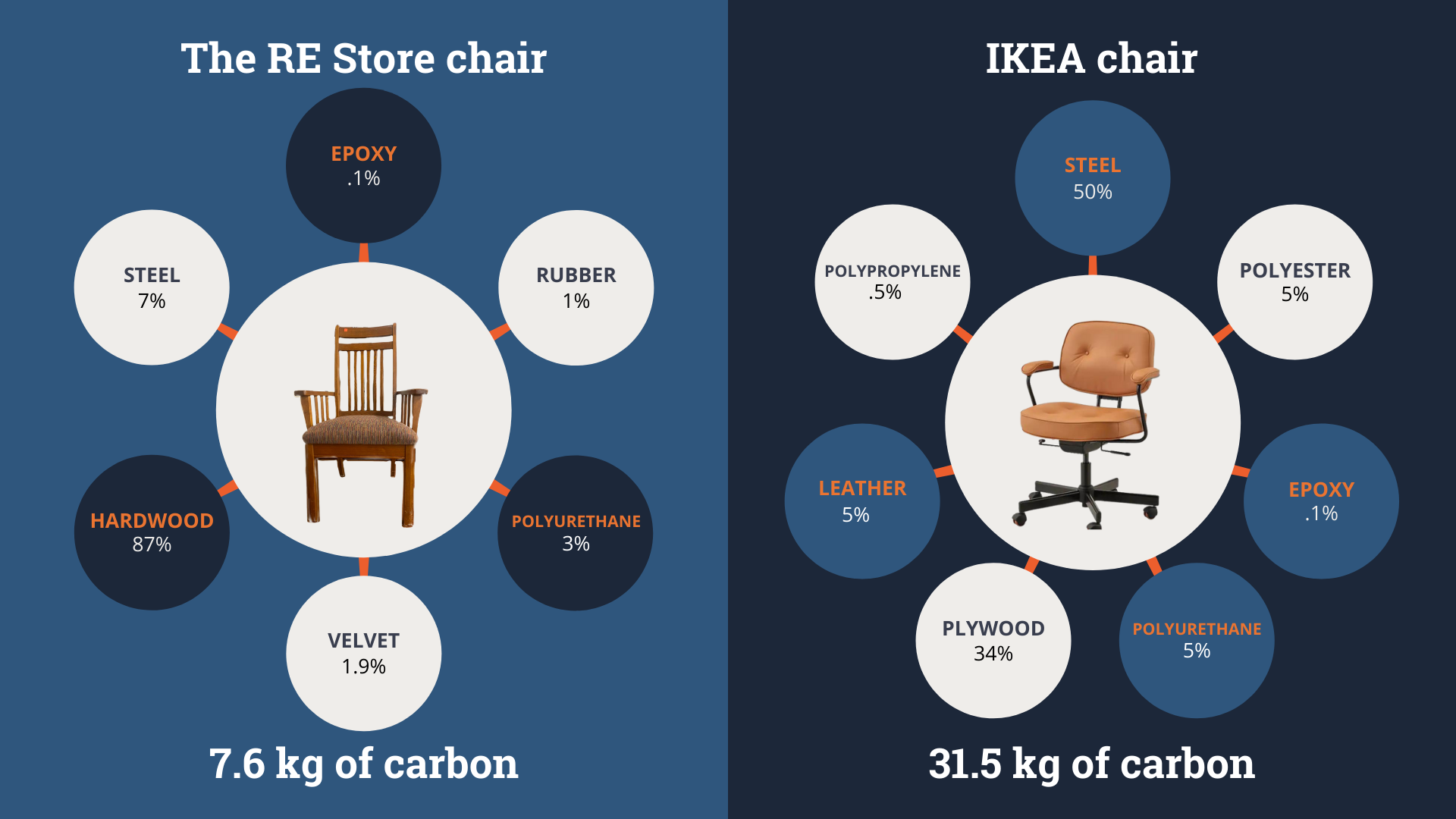
Guest Post by: Grace Cognasso
My name is Grace and I am a recent graduate of Western Washington University’s Institute for Energy Studies. Recently, I was a part of a Life Cycle Assessment class that analyzed the carbon impacts of The RE Store’s operations. Life Cycle Assessment is a powerful tool that evaluates the environmental impact of an item’s lifecycle from the cradle (its inception) to the grave (disposal into landfills). These assessments help us quantify the environmental impact of industrial processes from the initial gathering of raw materials to the disposal of products.
After partnering with The RE Store, we learned that Life Cycle Assessments are not common in the reuse industry. To address this, we developed a tool to evaluate the environmental impact of reuse. Our methods measure greenhouse gas emissions and embodied carbon across all stages of a product’s life. Embodied carbon is the sum total of the greenhouse gas emissions that arise from the sourcing and production of materials that items are made from, the lifespan of those materials, and their eventual disposal. Our Life Cycle Assessment data showcases the embodied carbon saved by reusing building materials through architectural salvage and community donations.
Part of our work included a comparison assessment between new furniture purchased at IKEA and previously-owned furniture found at The RE Store. We chose to compare with Ikea because we wanted to see the differences in carbon emission in buying a brand new piece of furniture and one that is pre-owned and ready for a second life. After comparing a chair, bookcase, desk, and table from both locations, we consistently found that kilogram for kilogram, the previously-used products from The RE Store carry fewer embodied emissions than the new IKEA products. These differences in embodied emissions can be explained by three main factors: differences in materials, differences in shipping, and The RE Store’s commitment to diverting waste from the landfill.
For example, a 20 kilogram new IKEA chair carries 31.5 kilograms of embodied carbon* while an 18 kilogram reused chair carries 7.6 kilograms of embodied carbon. Half of the IKEA chair is made from steel, which carries 14.6 kilograms of carbon, while 87% of the RE Store chair is made from hardwood, which only carries 4.85 kilograms of carbon. When we subtract the carbon emissions of The RE Store chair from the IKEA chair, we see that this offsets 23.9 kilograms of carbon. By purchasing the reused chair, one less chair from IKEA has to be built which prevents 23.9 kilograms of carbon from entering the atmosphere. This offset is equivalent to one person going vegetarian for a week.
More so, our study found that by diverting building material from the landfill, The RE Store is able to operate in a carbon deficit which means they prevent more carbon from entering the atmosphere than they emit in a given year.
For every kilogram of salvaged building material sold in store, .138 kilograms of carbon are avoided. In a single year, The RE Store prevents 312,876 kilograms of carbon from being emitted into the atmosphere. This is equivalent to taking 67 cars that would otherwise be driving to and from work, school, or vacations off the road for a full year. The data speaks for itself: by buying used and supporting the local economy we can work together to promote sustainable communities and protect the health of our fragile environment.
* Here I am using carbon in place of CO2e which is a term used to describe carbon emissions in a common unit. CO2 is considered the baseline for greenhouse gas emissions. Other common greenhouse gasses are methane (CH4) and nitrous oxide (NO2). The reason the gases are put into a common unit is that different gasses possess different levels of intensity. Methane is 25x more harmful than carbon dioxide meaning it warms the earth at a rate of 25x faster than CO2 while nitrogen oxide is 298x so, these numbers are called the greenhouse warming potential.
To contact Grace about her work, find her on LinkedIn or send her an email.
